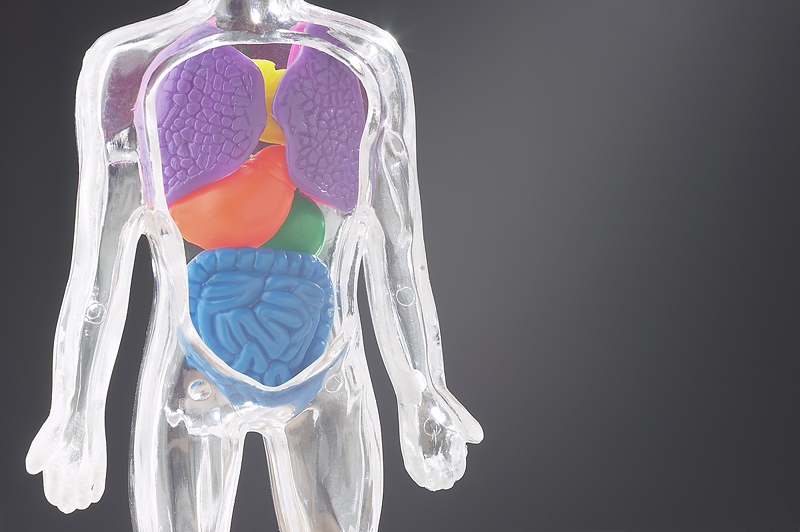
Some people might develop schizophrenia when a normal process of brain development goes haywire in adolescence and early adulthood, Harvard researchers report.
Everyone undergoes what is called “synaptic pruning” as they move into adulthood, explained study author Steven McCarroll, director of genetics for the Broad Institute’s Stanley Center for Psychiatric Research and an associate professor of genetics at Harvard Medical School in Boston.
It’s how extra brain cells and synapses (the junctions where nerve signals cross from one brain cell to the next) are eliminated in the cerebral cortex, to increase the efficiency of function, he said.
But a gene that contributes to synaptic pruning may increase a person’s risk of schizophrenia if certain mutations cause things to go wrong, McCarroll and his colleagues explained.
“Somehow, this biological process becomes miscalibrated and removes too many synapses,” McCarroll said. “Something about this process of maturation, if it goes awry, results in brain wiring that can no longer perform some of the basic functions that it used to be able to perform.”
The findings were published online Jan. 27 in the journal Nature.
About 1 percent of U.S. adults have schizophrenia, and about seven or eight people out of every 1,000 will have schizophrenia in their lifetime, according to the U.S. National Institute of Mental Health (NIMH).
People with schizophrenia may hear voices or see things that aren’t there, or develop irrational delusions of grandeur or persecution, according to NIMH. Patients might also display disorganized thinking, agitated body movements or emotional withdrawal. Symptoms most frequently appear in patients when they are teenagers or young adults.
The gene implicated in this study, C4, normally acts as a regulator of the immune system, McCarroll said. The gene helps target debris, viruses and other pathogens for destruction by immune cells.
Earlier research had linked the C4 gene to schizophrenia, leading some to believe the mental disorder might be caused by some sort of virus or infection, he said.
However, the research team learned that the C4 gene also “moonlights” in synaptic pruning, playing a role in the process by tagging synapses for elimination, McCarroll said.
His team’s analysis of genetic data for more than 65,000 people revealed that patients who had particular forms of the C4 gene showed a higher expression of that gene and, in turn, had a higher risk of developing schizophrenia.
“This is a promising model because it addresses what has been two of the central mysteries of schizophrenia — the age of onset, in adolescence, and genetic results that have seemed to point to immune molecules as having some role in the illness,” McCarroll said.
Synaptic pruning is particularly active during adolescence, which is the typical period of onset for schizophrenia symptoms. And brains of schizophrenic patients tend to show fewer connections between neurons (brain cells), the researchers said.
And “when we got to the bottom of this genetic effect, yes, it’s an immune molecule, but it’s an immune molecule with a different job in the brain,” McCarroll said. “It’s important when we got to the bottom of this genetic effect, it’s not pointing to a virus or infection, it’s pointing to brain wiring.”
Schizophrenia currently is treated mainly through the use of antipsychotic medications, according to NIMH. Patients might also need therapy and rehabilitation to help them lead a normal life, once medication has stabilized their condition.
The new discovery by McCarroll and his team could lead to new medicines for the treatment, and possible prevention, of schizophrenia in people who carry this genetic risk, he said.
“I get emails every day” from drug companies interested in exploring possible treatments based on this research, McCarroll said, although he warned that “it takes many, many years to go from biological discovery to a new medicine.”
Dr. Vishwajit Nimgaonkar, a professor of psychiatry and human genetics at the University of Pittsburgh, praised the new study as “very sophisticated and fairly comprehensive.”
However, Nimgaonkar added that the findings really are just a first step along a promising new line of research.
“I don’t think they’ve proved conclusively this is one of the mechanisms that causes schizophrenia, but they’ve certainly got a lot of minds thinking,” he said. “This might lead to new drugs for treating schizophrenia, but we really need to figure out the mechanism properly first, and then figure out a way to treat the problem.”
More information
For more on schizophrenia, visit the U.S. National Institute of Mental Health.
Source: HealthDay

Leave a Reply